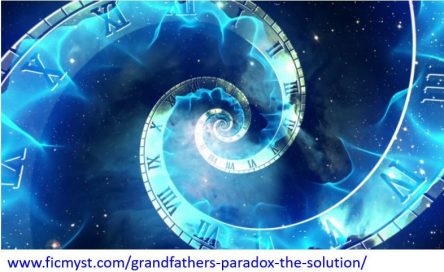
It is written in the gospels that Jesus Christ was crucified in Jerusalem during the tenure of Pontius Pilate, the Roman governor of Judea.
According to historians, Pilate’s years in the office started in January AD26 and finished in December AD36. The years AD26 and AD36 fall full within this office time. (inclusive calculation)
For the time of Jesus Christ’s crucifixion, today AD33 is the more accepted year, but AD36 is also partly accepted, as we have written earlier.
Let’s transform Pilate’s years in office 220 years forwards!
AD26 becomes 246CE and AD36 becomes 256CE.
According to the back-calculated Jewish calendar, in the interval 246CE – 256CE, only in 256CE does Nisan 14 fall on Friday.
Therefore, the most likely new date of the crucifixion of Jesus Christ is: 28 March 256CE. This date corresponds to Friday, Nisan 14 4016, in the Jewish calendar.
According to the above statement: Jesus was crucified shortly after his 42nd birthday since he was born on 6 January 214CE.
At the crucifixion, Jesus’ age of 42-43 is acceptable because it does not contradict some of the apocryphal gospels.
The above date of 256CE corresponds, backwards transformed by 220 years, to 30 March AD36 or 3796 Nisan 14 Friday.
Putting the year of Jesus’ crucifixion to AD33 is a back-transformation by 223 years instead of 220 years on the timeline. (256CE back to AD33)
Where can this 3-year difference come from?
Three of the Gospels report that after Jesus’ crucifixion, there was a full moon in the late afternoon and a long period of darkness, too.
There could not have been a solar eclipse because, for astronomical reasons, a solar eclipse is only possible on a new moon, and a dark solar eclipse can last only for a few minutes. (As we have already seen at the solar eclipse of Emperor Augustus.)
On 30 March AD36, there was a full moon in Jerusalem, but there was no lunar eclipse at any time close to this date.
On 3 April AD33, there was indeed a full moon and a partial lunar eclipse, but, as we calculate now, this eclipse was not visible from Jerusalem.
On the night of 28 March 256CE, a total full moon was well visible from Jerusalem. There was indeed a total lunar eclipse on this day on far East. However, at today’s accepted value of Delta T, this was also not visible from Jerusalem. If Delta T had been closer to zero around that year (as it has been consistently for the last 400 years), this eclipse would still not have been visible from Jerusalem.
The lunar eclipses of 33 AD and 256CE are shown in the following map calculation by NASA expert Fred Espenak:

Source: https://eclipse.gsfc.nasa.gov/SEpubs/5MCLE.html
(Comment: The above lunar eclipse would have been visible from Jerusalem on 28 March 256CE if the Delta T value had been around minus 9000 sec. According to our present knowledge, this enormous negative Delta T value is unlikely. There can hardly be such a significant error in the retrospective interpolation of Delta T because that would require the Earth’s rotation to be slightly accelerating, even though we know it to be somewhat decelerating today.)
The possibility arises that the researchers put the date of Jesus’ crucifixion on Friday, 3 April AD33 (3793 Nisan 14) because they were looking for an astronomically based darkness around this year. They did not know what caused the darkness but suspected a lunar eclipse. However, the lunar eclipses were inaccurately counted back at the insertion of 220 years, and a false lunar eclipse or, more accurately, “darkness tradition” was built on the inaccurate result…
The literature suggests that other natural phenomena, such as a dust cloud or a distant cloud of volcanic soot, may have caused the darkness.
Perhaps, the legend of the long darkness is only a nice metaphor, and it could be an afterthought to show a heavenly sign and underline the horror of Jesus’ crucifixion.
Post summary Today's accepted date of the crucifixion of Jesus: Data accepted as primary: No. 1: (223 years earlier) Date of crucifixion: 3 April AD33 Friday, Nisan 14, 3793. Full Moon: 3 Apr AD33, 100% The lunar eclipse occurred in the far East, However, only perhaps faintly visible from Jerusalem. Partly accepted data: no. 2: (220 years earlier) (Partially accepted due to the missing lunar eclipse.) 30 March AD36; Friday, Nisan 14, 3796. Full Moon: 30 March AD36, 100% Lunar eclipse: There were no lunar eclipses near this date. The proposed new data: Date of Crucifixion: 28 March 256CE; Friday, Nisan 14, 4016. Full Moon: 28 March 256CE 18:33; LT Jerusalem, 100%; Total lunar eclipse: 28 Mar 256CE 13:21 UT Not visible from Jerusalem at today's value of Delta T. A dark cloud could cover this rising full moon for a longer time.
See the full moon rise on 28 March 256CE in the Stellarium “photo” below:

The above results show that it is astronomically and calendrically possible to shift the date of the crucifixion backwards by 223 years. It is virtually a little “confusion” in the conception of the general 220-year backshift. However, do not forget that AD33 was not a generally accepted year, either. If the year AD36 had been taken earlier, our result would have been a backshift by 220 years. So, this 3-year discrepancy helps somewhat cover up the insertion of 220 years.
